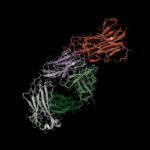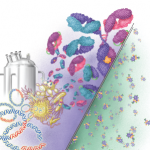(Reuters Health)—U.S. commercial health plans only covered biosimilar treatments as preferred products in 14% of coverage decisions last year, according to an analysis of publicly available data on coverage decisions.1
Researchers examined records from the Tufts Medical Center Specialty Drug Evidence and Coverage (SPEC) database, which has information on coverage decisions made by 17 of the largest U.S. health plans that publicly share this data.
Based on 535 coverage decisions in 2019 that involved 9 biosimilars and 40 drug-indication pairings of biosimilars and reference products for the same indication, biosimilars received non-preferred status in 33% of cases and on par status in 53% of decisions.
“These findings have important implications for patients, as they mean that a patient’s insurer can affect their access to biosimilars,” says lead study author James Chambers of the Center for the Evaluation of Value and Risk in Health at Tufts Medical Center, Boston.
“Our findings may also have important implications for patients transitioning between insurers, as differences in insurance plans’ coverage decisions may result in care disruptions,” Mr. Chambers says by email.
The health plans in the study issued a median of 32 biosimilar coverage decisions, with a range of 18 to 40 decisions.
Researchers looked at nine biosimilar drugs: bevacizumab-awwb, epoetin alpha-epbx, filgrastim-aafi, filgrastim-sndz, infliximab-abda, infliximab-dyyb, pegfilgrastim-cbqv, pegfilgrastim-jmdb and trastuzumab-anns.
Across all of the health plans in the study, the media number of coverage decisions for an individual biosimilar was 56, and ranged from 12 to 134.
Seven health plans covered a biosimilar as preferred in at least one decision, and only two of these plans preferred biosimilars in at least half of their coverage decisions.
Decisions also varied by drug. Although 51% of plans covered filgrastim-sndz as preferred, for example, 65% of plans covered infliximab-abda as non-preferred.
Researchers lacked data to explain why there was so much variation in coverage decisions, and they also lacked information on any negotiated rebates that may have contributed to any decisions based on the relative costs of different drugs.
Drug characteristics, such as the time since U.S. Food and Drug Administration (FDA) approval or whether the drug treats cancer, may explain some of the variation, the authors note.
“Insurance plans and their Pharmacy Benefit Managers (PBMs) seek deals with drug manufacturers not only based on discounts from the list price, but by negotiating rebates,” says Donald Miller, a professor of pharmacy practice at North Dakota State University, Fargo, who wasn’t involved in the study.
“Often manufacturers offer large rebates to PBMs that keep the actual price of a reference drug to the PBM below that of the biosimilar,” Prof. Miller says by email.
Limitations of the study include the lack of information on appeals for coverage denials and on the benefit design of health plans including any co-insurance or co-payments.
“The way many drug insurance plans are structured, the biosimilar may not be cheaper for patients,” says Daniel Solomon, MD, MPH, of Brigham and Women’s Hospital and Harvard Medical School, Boston.
“The rationale is difficult to understand,” Dr. Solomon, who wasn’t involved in the study, says by email. “Patients should always shop around and get details before deciding on an insurance option.”
Several authors of the research letter reported receiving grants from or consulting for biotech or pharmaceutical companies and other organizations.
Reference
- Chambers JD, Lai RC, Margaretos NM, et al. Coverage for biosimilars vs. reference products among U.S. commercial health plans. JAMA. 2020 May 19;323(19):1972–1973.



